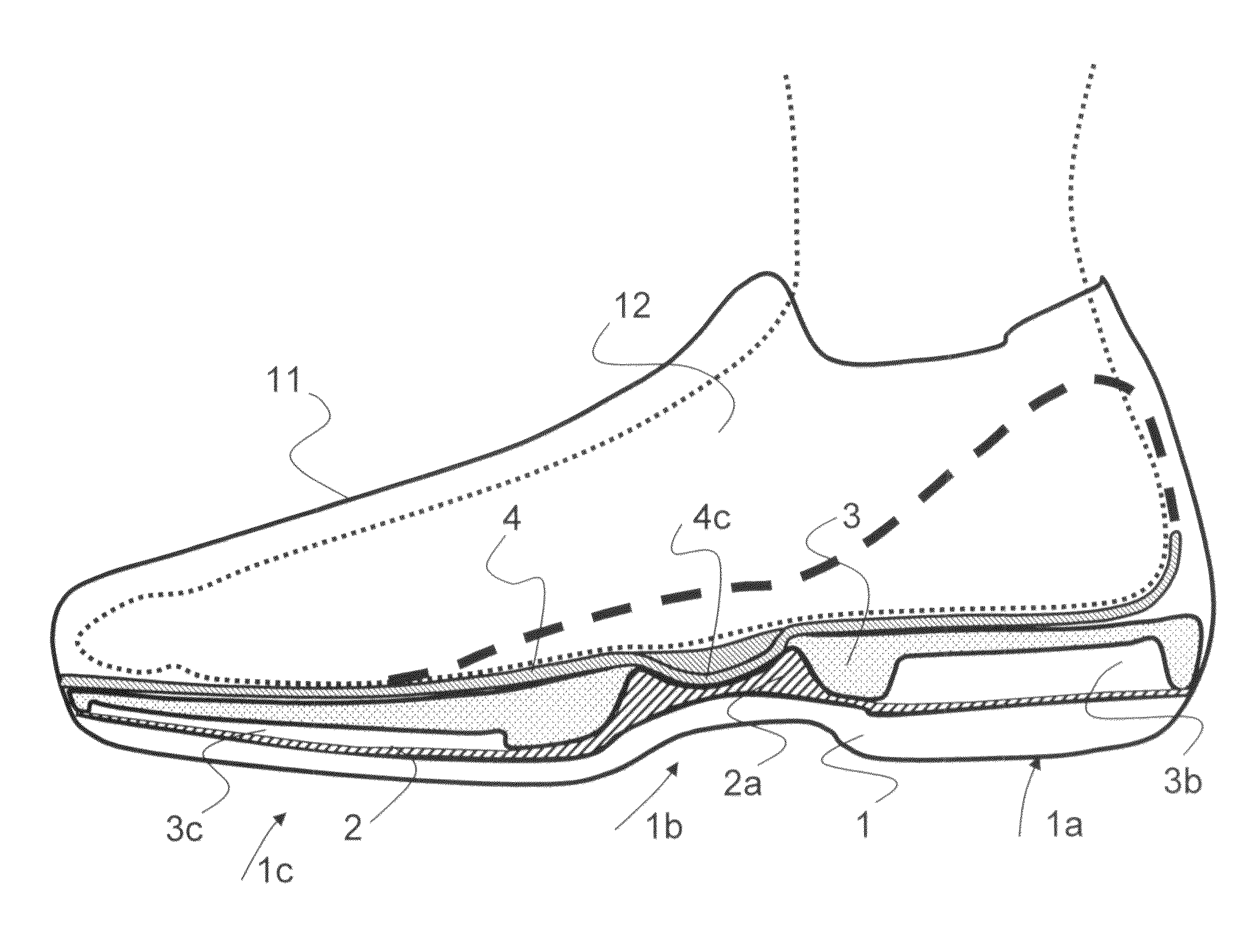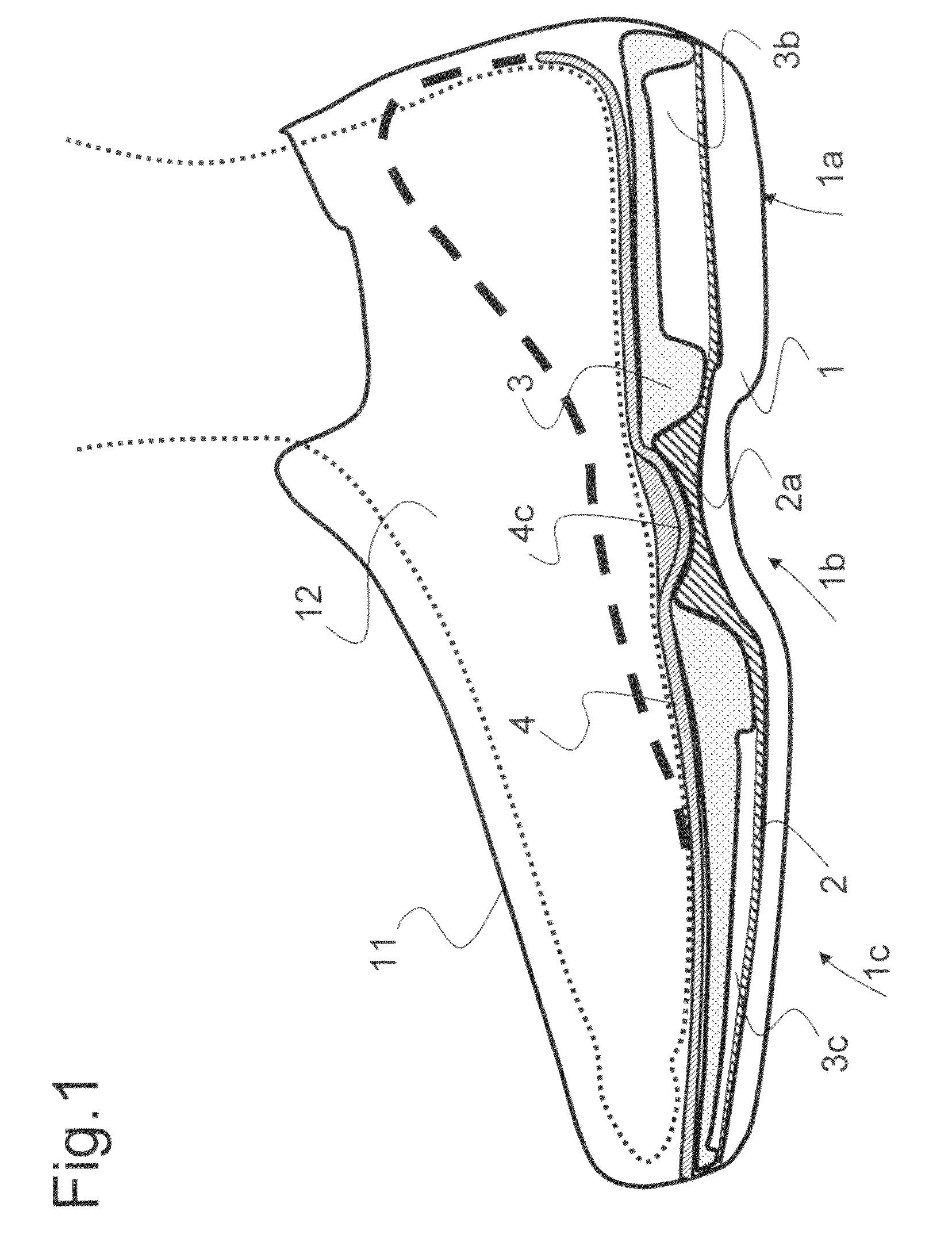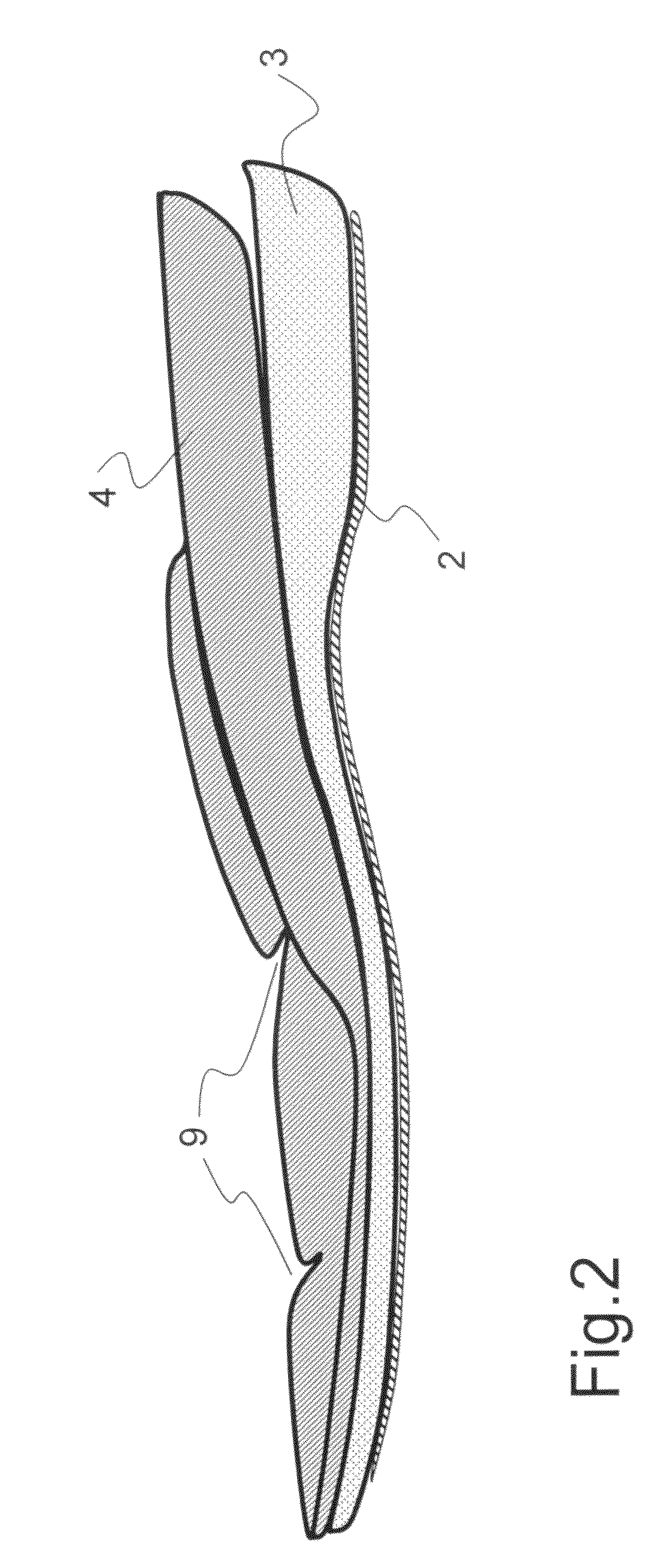Shoe
a technology of shoes and linings, applied in the field of shoes, can solve the problems of foam material becoming brittle, being exposed to particularly great stress, and relatively large wear and tear, and achieve the effect of preventing pronation or supination
- Summary
- Abstract
- Description
- Claims
- Application Information
AI Technical Summary
Benefits of technology
Problems solved by technology
Method used
Image
Examples
Embodiment Construction
[0032]In FIG. 1 to FIG. 5, identical or similar parts of the shoe of the invention are identified by the same reference numerals. The shoe of the present invention comprises a continuous sole body 1 and upper 11 connected therewith, which encloses a foot 12 of a wearer that is represented in broken lines only in FIG. 1. The upper 11 may be closed in a usual manner, for example, by means of laces, Velcro-type fasteners, or the like. The sole body 1 extends from a rear heel region 1a via a contiguous metatarsal region 1b to a front ball toe region 1c; each of these three regions 1a to 1c extends over approximately one third of the shoe's length.
[0033]A sole covering, not illustrated in detail in the Figures, is provided on the underside of the sole body, which covering is made from an abrasion-resistant material, such as hard rubber, for example, and may be profiled on its underside.
[0034]On the sole body 1, a first thin insole 2 is arranged with an arch insole 2a integrated therein i...
PUM
 Login to View More
Login to View More Abstract
Description
Claims
Application Information
 Login to View More
Login to View More - R&D
- Intellectual Property
- Life Sciences
- Materials
- Tech Scout
- Unparalleled Data Quality
- Higher Quality Content
- 60% Fewer Hallucinations
Browse by: Latest US Patents, China's latest patents, Technical Efficacy Thesaurus, Application Domain, Technology Topic, Popular Technical Reports.
© 2025 PatSnap. All rights reserved.Legal|Privacy policy|Modern Slavery Act Transparency Statement|Sitemap|About US| Contact US: help@patsnap.com



